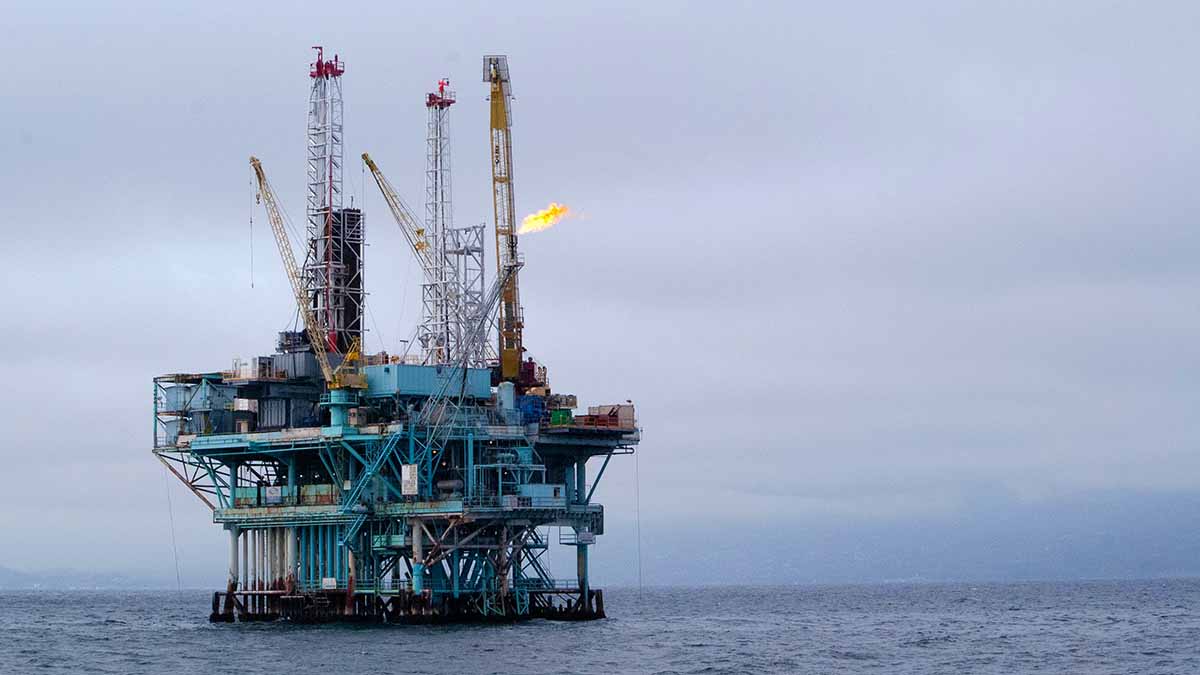For years, rig operators have used oil analysis as an essential tool for routine maintenance and future cost avoidance. On oil rigs, equipment failures risk employee safety, and missed production targets are realized very quickly. The remote locations of offshore rigs make routine maintenance very expensive.
In most cases, skilled people and supplies can only reach the platform by ship or helicopter, so the cost of bringing technical specialists, replacement equipment, spare parts, and tools is high.
Oil analysis is critical in alerting the maintenance team to problems that may damage a vital system. An effective oil analysis program also helps to allocate scarce resources efficiently by planning maintenance based on equipment conditions rather than time intervals.
Currently, most offshore platforms take oil samples and ship them by helicopter to onshore labs for analysis. Once the results are available, they are sent back to the platform.
It costs more than $1 billion to operate a typical production platform over its 10 to 20-year life cycle, so operating costs per day can be estimated at $100,000 to $300,000.
A typical offshore platform contains millions of dollars of machinery critical to the crew’s safety and whose failure can easily put the platform out of operation. Oil analysis determines the amounts of various metals in the oil, providing a fast and inexpensive way to gauge the machinery’s wear.
Oil analysis also helps determine the condition of the oil by measuring byproducts formed by oxidation and by measuring the viscosity. Monitoring oil condition reduces the risk of catastrophic failure and the high cost of changing and disposing of oil in heavy machinery.
Typical equipment sampled on an offshore rig:
- Turbo gas-powered generators
- Fire water pumps
- Diesel engines
- Gearboxes
- Pumps
- Crane engines
- Hydraulic systems
Value Of Oil Analysis on Offshore Platforms
Recently, an offshore rig in the Gulf of Mexico contacted a reliability service provider in Louisiana to seek a solution to improve their oil analysis program. The long turnaround time from their onshore lab compounded the weaknesses of their current program.
Key Issues to Address:
- Frequent resamples due to mislabeling. Collected samples from the various rotating equipment on the platform were misidentified, leading to erroneous results by the contract lab. Policy demands action to CAUTION or ALERT status samples, so long delays caused operators to discard results.
- Missed Compressor failure A genuine problem detected by onshore oil analysis on a failing air compressor was received one month after the compressor had failed without warning. The rig operator then incurred extra costs replacing it. It can cost $250K for expedited freight and installation charges to replace a critical system ASAP.
- Resources for onsite oil analysis. The rig operator had submitted their operating budget for 24 months to the oilfield license holder. They could not dedicate rig personnel to operating onsite oil analysis equipment in addition to sampling.
The Solution: FieldLab C
The oil producer asked the reliability service provider to travel to its platforms with a portable oil analyzer that could provide comprehensive analysis, deliver immediate results, and generate a full report with recommendations throughout the shift.
The service provider proposed sending a Level III Vibration Analyst/Tribologist Service Engineer, who had all the safety certifications for transport and was familiar with rotating equipment and maintenance strategies on board the rig.
The major challenge was to select a portable, solvent-free oil testing device that could measure abnormal metals, viscosity, oil chemistry, and particles with the ability to provide a report. The solution chosen was the FieldLab system.

FieldLab 58C is a battery-powered, Integrated oil analysis system that provides quick and comprehensive oil analysis in the field. Measuring abnormal metals, viscosity, oil chemistry, and particles.
When deploying field solutions, careful consideration must be given to turnaround time, technique, and data integrity. The FieldLab onsite oil analysis system provides fast results with the data integrity of a commercial oil analysis lab.
The FieldLab is a rugged, portable expeditionary fluid analysis system that allows operators in the field to perform comprehensive, mobile lubricant sampling. The battery-powered device enables complete lubricant assessment for condition monitoring and rapid results that permit informed maintenance decisions.
It requires only a small sample volume to perform a comprehensive analysis, and no chemicals or solvents are needed for sample preparation or cleaning. With all four tests, the complete analysis only takes about 5 – 7 minutes.
FieldLab is a unique system design where machine failure and root cause analysis are interpreted using a comprehensive process combining a modified pore blockage particle count technique with an XRF Analyzer.
This unique system design allows for a broader range of particle size detection, allowing the user to identify changing wear rates and isolate potential root causes of problems in lube systems. Additionally, viscosity and oil chemistry can be run simultaneously.
Initial Examples
There have already been several cases where the savings from onsite oil analysis exceeded the entire year’s service cost.
For example, technicians on one platform replaced the diesel engine on a crane. When the technician visited the platform and tested the oil, the viscosity was 70 cSt when it should have been 120 cSt. The technician ran additional tests and discovered the presence of diesel fuel in the oil.
A mechanic put dye in the fuel supply and found a broken injector line was leaking diesel fuel into the oil sump. This leak could damage the engine or cause a fire. The oil analysis results made it possible to fix the problem with a low-cost solution – replacement of the injector line.
In another case, the oil analysis results on a large gas turbine compressor showed a high particle count. The technician queried the platform’s maintenance team and discovered they had recently replaced a valve in the lube oil system.
The technician wondered whether the oil particle count might have spiked in response to this maintenance, so he flushed the lube system and ran another test. This time, the test showed a much lower particle count, although still above normal values.
After discussing the situation with the maintenance foreman, the decision was made to do nothing immediately but to retest the equipment the following month. The particle count had returned to normal levels when the equipment was retested.
According to the maintenance foreman, if an onshore lab had tested the oil, there would have been no chance to do an immediate follow-up study. It would have been necessary to, at the minimum, perform vibration testing and possibly perform even more expensive repairs.
Data Management and Reporting
The results of offshore oil analysis can be uploaded to the TruVu 360 Fluid Intelligence System. The results are available not only to the maintenance team on the platform but also to onshore managers and analysts who track trends and provide recommendations on whether to invest in a particular piece of equipment.
The oil analysis method used on most offshore platforms takes up to a month to send samples to a lab and receive the results.
Onsite oil analysis has the potential to provide significant value and benefits by allowing testing on the rig and delivering immediate answers to the maintenance team. Faster results can prevent breakdowns and avoid unnecessary maintenance.
The savings are realized by getting answers quickly and better managing equipment uptime on the offshore rig.











